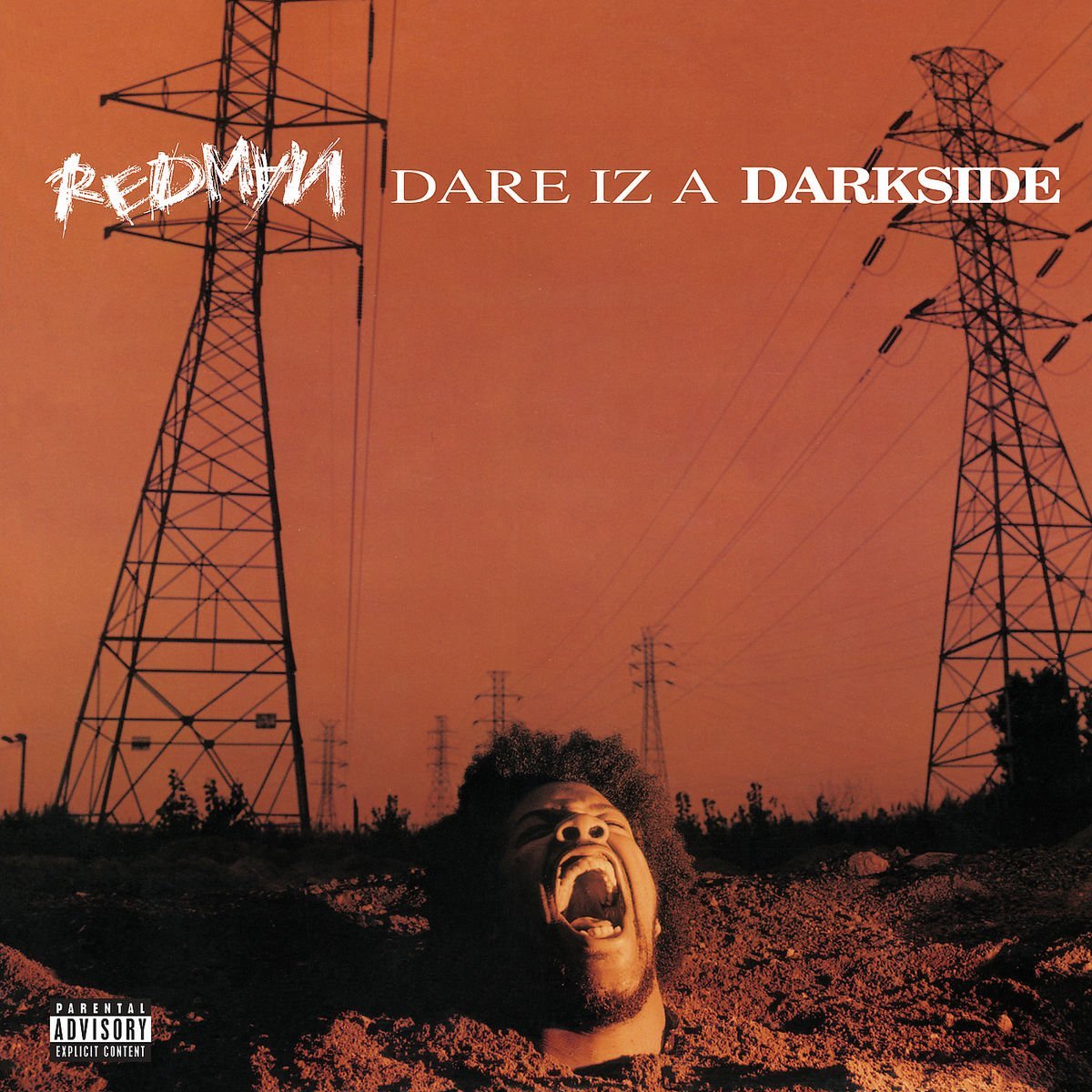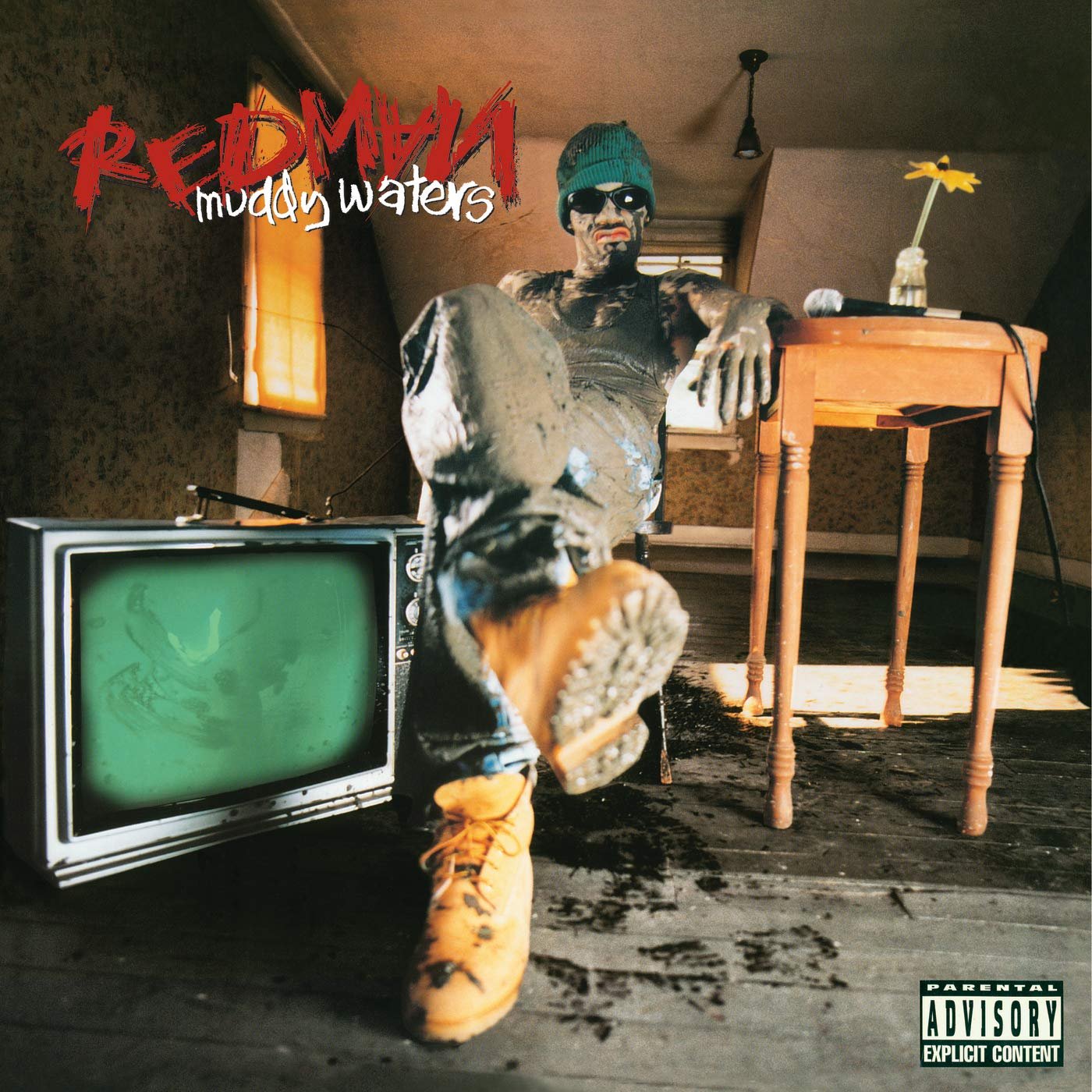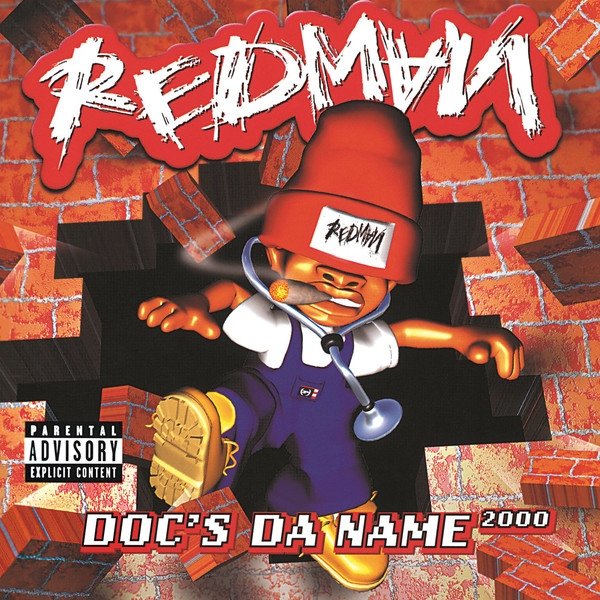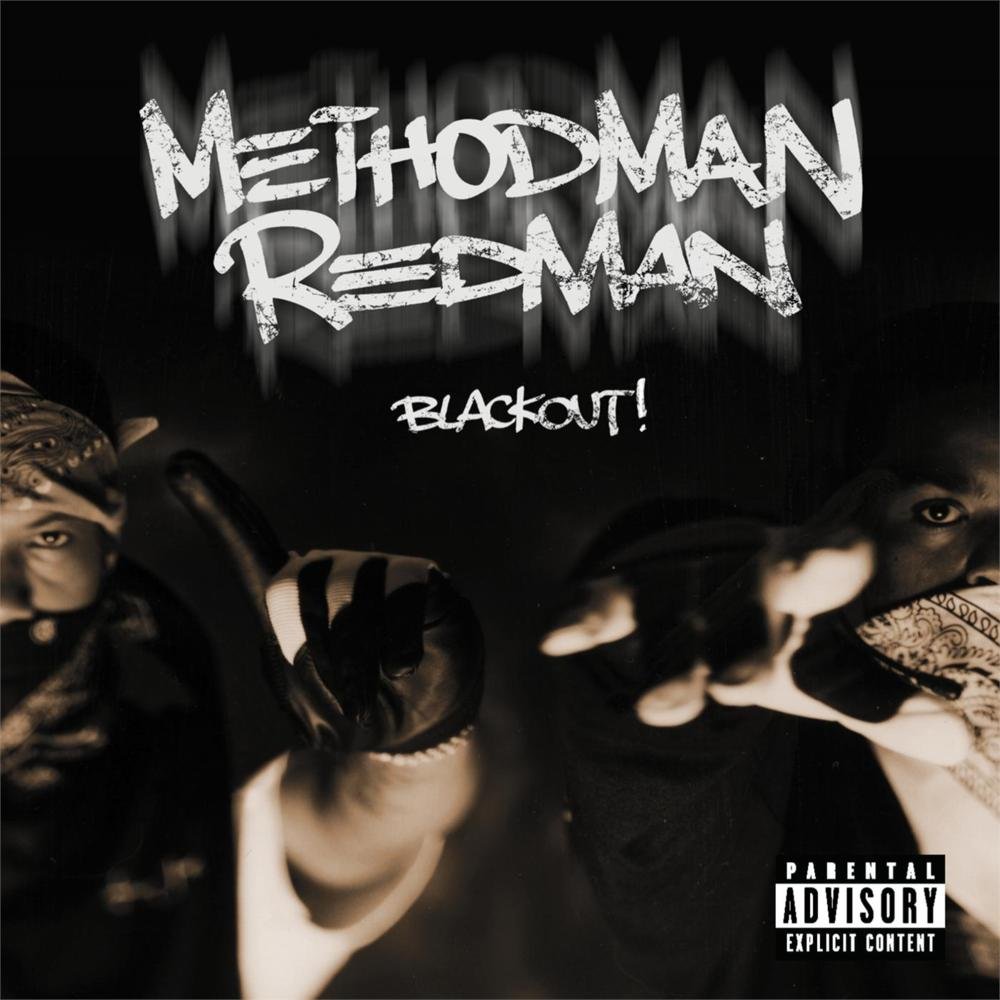Happy 30th Anniversary to Redman’s debut album Whut? Thee Album, originally released October 6, 1992. (Note: Select sources cite September 22, 1992 as the album’s official release date and the RIAA site references October 9, 1992.)
About halfway through the track “I’m a Bad,” a quintessentially ruff-and-rugged track on his debut solo album Whut? The Album, Reggie “Redman” Noble addresses the listener. “This is for y’all hokey-pokey, punk pussy motherfuckers,” he sneers. “Just to show y’all I do what the fuck I want to do, I want y’all to check this on the real.” The beat then completely switches and he launches into a mini parody of a techno track, shouting, “Shake it! C’mon, shake it! What’s up dog?! What’s up dog?! What’s up dog?!”
These 15 or so seconds are the distilled essence of Redman: hard-as-nails delivery juxtaposed with flashes of complete and utter goofball humor. Because, as I’ve written before on this site, Redman doesn’t give a fuck. Not even a little bit.
But at the time Redman dropped his first solo album 30 years ago, the Newark, New Jersey native had been putting in work for a while. He’d made his start as a DJ, working Brick City clubs and backing up local hip-hop acts like future Lords of the Underground member DoItAll. He’d also established himself as an emcee with impeccable freestyling/battling credentials. He travelled throughout New York City and on the road with Biz Markie, ripping it nightly.
Eventually Redman hooked up with EPMD after opening for the group (as a DJ for the aforementioned DoItAll) at a venue in Newark, which eventually led to him becoming fast friends with Erick Sermon and Parrish Smith (particularly Sermon) and a member of the Hit Squad crew.
Once linked up with EPMD, Redman quickly established himself as a lyricist that you had to check for. He gave two scene-stealing performances on EPMD’s Business As Usual (1990) and contributed an all-time great verse on “Headbanger,” from the group’s Business Never Personal album released in 1992.
Redman possessed the verbal dexterity of few emcees rapping at the time, and was powered by a thick, blunt voice that could deliver his rhymes slow and low or rapid-fire with incredible precision. On record, he repped his Newark crew the Pack Pistol Posse (P.P.P.) and extolled the virtues of herbal elevation.
With 1992 becoming the Year of the Hit Squad, Whut? Thee Album was the definitive exclamation point. The spring and summer had seen the releases of albums from Das EFX, K-Solo, and EPMD, and in the fall, Redman dropped perhaps the best album of the bunch. Though a little rough around the edges in retrospect, the album is a near perfect blend of hardcore rhymes and funk-filled, rock-solid tracks. Redman carried himself with the microphone presence and confidence of a seasoned veteran, ready to lyrically rock your snot-box at a moment’s notice. In a year crowded with great releases, Whut? stands among the best of them.
Musically, Whut? is well-regarded for its use of the Funk. Though California-based artists like N.W.A, Digital Underground, and Too $hort were known for sampling the works of Parliament-Funkadelic and other funk mainstays, the practice was yet to be regarded as a West Coast trademark. Shoot, Redman’s mentors EPMD had practically invented sampling Roger Troutman and Zapp, and East Coast artists of all stripes found inspiration in the music of George Clinton. Whut? had a deep and abiding love for funk music, as Erick Sermon and Redman took funk loops that had already been sampled a dozen times and gave them their own muddiness that made the beats feel almost alien.
As with many late ’80s and early ’90s albums, there is the issue of who produced what on Whut? Thee Album. Sermon received the vast majority of the production credits, with Redman being listed as a co-producer. But, as Redman told Brian Coleman in Check the Technique, Sermon often left Redman to his own devices in the studio while recording the album, leaving him to put together the tracks on his own. As it stands, Redman turned out to be a solid triple threat on his debut outing: rhyming, producing, and laying the scratches on every track except one.
Watch the Official Videos (Playlist):
As great as Redman is at providing straight lyrical aggression, there’s something else going on through his early work that rarely gets noticed. Though the lyrics and music might rarely overtly reflect it, there’s a subtext of anger and psychic pain that runs through Whut? Thee Album. Indeed, the album is framed as the hallucinations of catatonic man trapped in a psycho ward, imprisoned due to violent assault, envisioning what his album would sound like if he can “focus his mind.” This discreet rage feeds into Redman’s lyrical ferocity and the album’s musical rawness.
Redman kicks things off with one of the great album opening tracks, “Time 4 Sum Aksion,” the album’s second single and its biggest hit. Redman tears into the track with reckless abandon, charging the album with seemingly boundless energy.
The album segues into “Da Funk,” the album’s most understated track. Here Redman displays his superiority over a sparse drum track, the guitar from the Meters’ “Hand Clapping Song,” and stabs from The Mohawks’ “The Champ.” Though the song is pretty brief, it features one of Redman’s strongest verses, as he raps, “Rough and rugged, and brother it takes ten to conquer / That’s why I'm on probation / Ever since three, I cut throats of MCs / Mediocre lyricists who burnt with degrees” and “My background straight from a black man’s culture / Want more? Buy the video or Redman sculpture / For your mantle, damn you / Too hard to handle E-Double slam once, and Redman slam two.”
Redman certainly seems the most at home when creating displays of his skills. Whut? Thee Album features two versions of the first single, “Blow Your Mind.” In this case, the original is better than the remix, as it sports a deeper, gruffer bassline and drums. Here, Redman also famously “freaks it in Korean” about two-thirds of the way into the second verse, rapping about weed and women for a few bars, before just giving up, and deciding to maintain the funk in his native language.
“Rated R” is the best pure lyrical exhibition on Whut? Over a loop from Maceo and The Macks’ “Soul Power ’74,” Redman unleashes his lyrical fury and rapid-fire delivery. On the first verse he raps, “So put your money where your mouth is / Watch Redman house shit / And if it’s beef, I’ll punch you in your mouth, kid.” Then for the second verse, he goes on an extended riff of inflicting grievous pain on a rogues’ gallery of horror movie villains, giving Freddy Krueger nightmares and collecting Leatherface’s hands and brain as gruesome trophies of victory.
The production on Whut? often solidifies the album’s character and bolsters Redman’s performance. “Atomic Dog” has never sounded as sinister as it does when sampled on “Watch Yo Nuggets,” a wickedly funky duet between Redman and Sermon, who’s the only guest rapper on Whut? Sermon’s production lends the track an extra layer of griminess, supplying a perfect backdrop for both his and Redman’s verses.
The aforementioned “I’m a Bad” remains one of the album’s best tracks. Aside from the faux techno interlude, the rumbling, pulsing track is as gritty as the album gets, and Redman remains in top form, rapping, “Then get an ice pick and kill a brother who pop trash / Basic instinct—I’m a shooter so they got blasted / Much ass I kick, groove to the master mix / My song still pumps when it's not even mastered, bitch!”
Though Redman excels at ruff-and-rugged battle rhymes, he demonstrates his aptitude for creating story-based rhymes on the album. With “So Ruff,” he tells a pair of narratives, each time infusing his unique personality with the tales. On the first verse, Redman adopts the persona of a reckless stick-up kid, desperate to get enough money to make ends meet. He robs a seemingly hapless guy on the way back from Burger King, only to discover he’s been set-up and is swarmed upon by a pack of police officers, and is left shot dead in the street. With the second and third verses, he spins an extended pro safe-sex cautionary tale. The coarse track is bolstered by EPMD’s DJ Scratch providing the cuts on the chorus, wrecking a vocal sample from Kurtis Blow’s “Tough.”
“A Day of Sooperman Lover,” the album’s closer, is clearly influenced by hip-hop’s master story-teller Slick Rick, as Redman tells a tale of a blunted rap superhero, rocking over a straight-forward sample of Johnny “Guitar” Watson’s track of the same name. The Sooperman Lover character became a staple of Redman’s solo albums for years, and this is a decent first entry. The humor is largely juvenile, and leans heavy into the realm of Gay Panic. Redman would refine the formula on future installments.
Enjoying this article? Click/tap on the album covers to explore more about Redman:
Redman also pretty much birthed the concept of pairing rugged rhymes with smooth and mellow beats on Whut? “Tonight’s Da Night,” the album’s third single, is the most famous example. After a few meandering wanna-be playa bars, Redman decides to “get with that rough shit” and boast about walking “around the streets with a black Tec-9 by the waistline, kickin' the hype shit” over a jazzy , quiet storm-esque track built from Isaac Hayes’ “A Few More Kisses To Go” and vocals from the Mary Jane Girls’ “All Night Long.” The result is a classic example of Bubblegoose and Timberlands hip-hop, smooth enough to bump in the car on a cold Saturday night, but packed with razor-sharp punchlines and delivery.
Redman closes the second verse on the song with another six bars that serve as his mission statement for his entire career, in terms of his attitude and approach to making music, as he raps, “But if you want to see a fly but frantic / Cool romantic, more slicker than my man Rick / You better check the Yellow Pages under smooth shit / ’Cause Red ain’t down for the bullshit/ N%$#as fucked up by letting me make an album / To get on the mic and let my fuckin' style run, motherfuckas…”
The oft-ignored “Jam 4 U” is another musical departure from the norm of Whut?, with Redman killing a spacey, mid-tempo piano track taken from Melvin Bliss’ “Synthetic Substitution.” When paired with vocals from Guy’s “Teddy’s Jam 2,” it gives the track an almost airy feel, but is grounded by Redman’s rock solid rap: “When my afro grow, that mean more rhymes to flow / But I continue, on the menu, and send you / On a jam that earthquakes the whole damn venue.”
Redman exhibits abundant creativity throughout Whut. On “Redman Meets Reggie Noble,” Redman “battles” himself. His alter egos trade verses over beats put together from the Emotions’ “Blind Alley” and the Village Caller’s “Hector,” each attempting to assert their dominance before retiring to find a cooler climate. “How to Roll a Blunt” is another song that exhibits Redman’s goofy charm, as he provides a step-by-step instruction of how to convert a Phillies cigar into a vehicle for marijuana delivery, before lending his unique humor to the second and third verses. Legendary producer Pete Rock apparently created the beat, though he only receives co-production credit in the album’s liner notes.
Though Whut? Thee Album should have been a capper to a year of absolute dominance by the Hit Squad, it was the last album released by the collective before they officially dissolved. Truthfully, by the time the album dropped, the crew was likely on their way to dissolution. Regardless, Whut? was the beginning of an incredible run for Redman, as he used the album as a launching point for an incredible career that saw him not only become one of the best artists of the ’90s, but across hip-hop’s entire history. The album, which quickly went Gold, is a well-formed first draft of the artist that he would continue to grow into as he recorded more material.
With Whut? Thee Album, Redman certified himself as a proverbial “five-tool player,” made a definitive artistic statement, and went on to build upon it. It’s what made him a unique artist and one of the best to ever record a verse.
LISTEN:
Editor's note: this anniversary tribute was originally published in 2017 and has since been edited for accuracy and timeliness.





